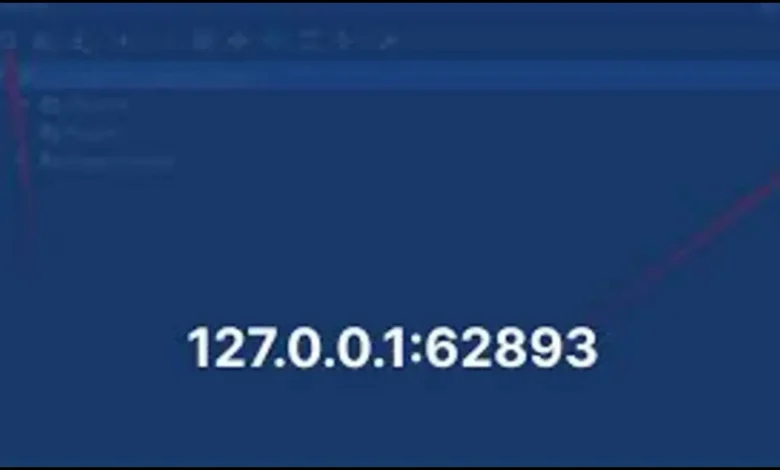Understanding 127.0.0.1:62893: The Cornerstone of Local Networking

Introduction
(127.0.0.1:62893)In the realm of networking, certain IP addresses and ports are not just technical jargon, but the lifeline of smooth communication between devices. One such address, 127.0.0.1, is universally recognized as the loopback address, a cornerstone of local networking. This article delves into the significance of 127.0.0.1, the function of ports, and how 62893 fits into the picture, highlighting their importance in software development and security.
The Loopback Address: 127.0.0.1
What is 127.0.0.1?
127.0.0.1 is a special IP address reserved for loopback traffic. This means that any traffic sent to this address is rerouted back to the originating device. It’s used primarily for testing and development purposes. By using 127.0.0.1, developers can simulate network communication without requiring a physical network.
How Does It Work?
When an application sends data to 127.0.0.1, the operating system intercepts the traffic and redirects it back to the same machine. This allows developers to test networking software without needing an external network connection, ensuring that applications are working correctly before being deployed.
Importance in Development
The loopback address is crucial in the development and debugging of network applications. It allows developers to:
- Test Locally: Verify that applications can send and receive data correctly.
- Debug Issues: Isolate network-related bugs by ensuring the problem isn’t with the external network.
- Develop Securely: Create and test applications in a controlled environment, reducing the risk of exposing vulnerabilities.
Understanding Ports
What Are Ports?
In networking, a port is a virtual point where network connections start and end. Ports allow multiple applications to use network resources simultaneously without interfering with each other. Each port is identified by a number, ranging from 0 to 65535.
Common Port Numbers
- HTTP (80): Used by web servers for transferring web pages.
- HTTPS (443): Used for secure web traffic.
- FTP (21): Used for file transfers.
- SSH (22): Used for secure remote login.
Dynamic and Private Ports
Ports 49152 to 65535 are known as dynamic or private ports. These are usually assigned temporarily to client applications when they communicate with a server. Port 62893 falls into this category, making it an ephemeral port typically used for temporary connections.
Combining 127.0.0.1 with Port 62893
When you see “127.0.0.1:62893”, it specifies a local network connection on port 62893. This can be broken down as:
- 127.0.0.1: The loopback IP address.
- 62893: The specific port number.
This combination is not just a theoretical concept, but a practical tool used in real-world scenarios. For instance, a local service or application running on port 62893 could be a local development server, a temporary testing environment, or any application needing to communicate internally.
Use Cases in Software Development
Local Development Servers
Developers frequently use local servers to test their web applications. By running a server on 127.0.0.1:62893, they can ensure the application is functioning correctly without exposing it to the internet.
Debugging and Testing
During development, applications can be configured to use various ports for different services. Using ports like 62893 allows developers to segregate services and streamline testing processes.
Secure Environment
Running applications locally on specific ports not only enhances productivity but also minimizes the risk of external attacks. Developers can safely test security features and fix vulnerabilities before deploying applications to a public server, providing a sense of reassurance and confidence to network professionals.
Security Implications
Minimizing Exposure
Using 127.0.0.1 ensures that applications are not accessible from external networks, reducing the risk of unauthorized access during development.
Port Management
While local ports like 62893 are generally safe, it’s important to manage them properly. Ensuring ports are not inadvertently left open can prevent potential security breaches.
Monitoring and Control
Developers and system administrators should regularly monitor port usage to detect any unusual activities, which could indicate a security threat.
Conclusion
The combination of 127.0.0.1 and ports like 62893 forms a fundamental part of local networking in software development. They offer a secure, controlled environment for testing and debugging applications, significantly contributing to the development process. By understanding and utilizing these tools effectively, developers can enhance their productivity and ensure the reliability and security of their applications before deployment, underscoring the importance of this knowledge.
This comprehensive exploration highlights the critical role of the loopback address and dynamic ports in the development and security landscape, providing valuable insights for both novice and experienced developers.
you may also read usatimenetworks.






